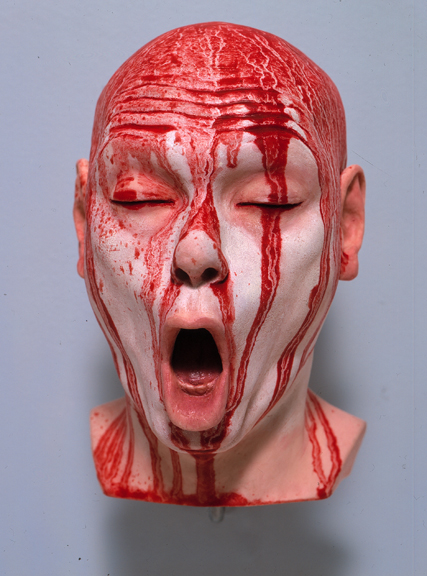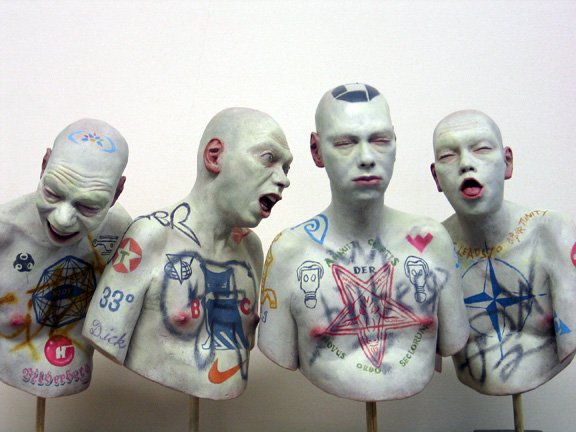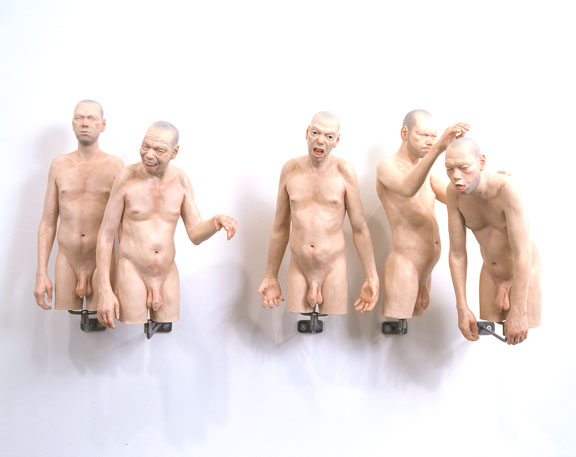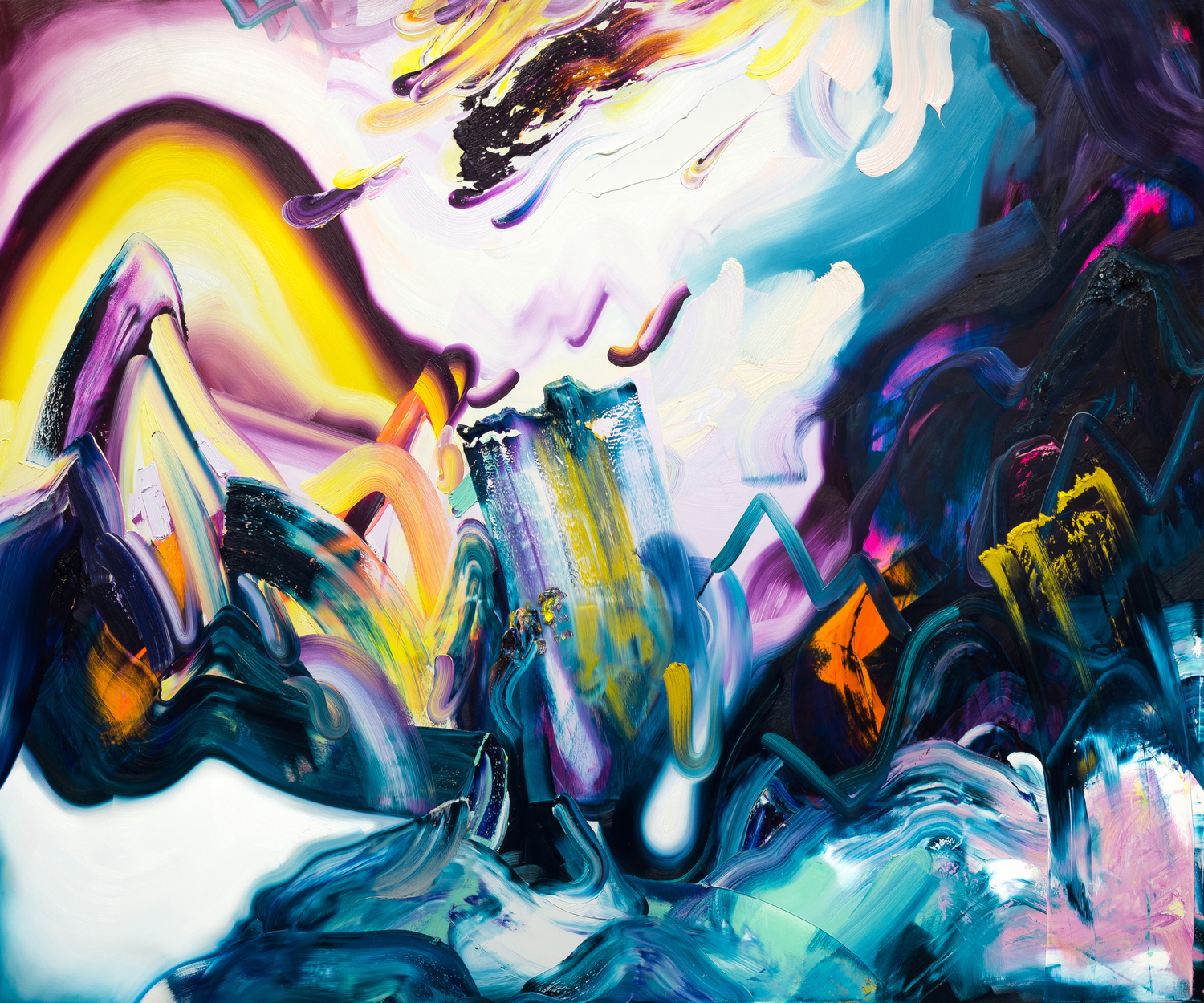By Randy Gladman
A spontaneous chain of personalities and events lead to Czech-born sculptor Richard Stipl’s debut solo show in New York. It started in 2001, at Art Forum Berlin, where the artist’s Toronto dealer, Christopher Cutts, was encouraged by the American collector Steve Shane to take part in the first Scope Art Fair, slated for spring 2002 in New York City. Only hours after selling out his entire installation at Scope, Stipl met David Hunt in the halls of the hotel where the fair was staged. A bombastic and prolific curator and critic, Hunt was looking for artists to flesh out a summer group show at the Daniel Silverstein Gallery.
With the show already titled “The Accelerated Grimace,” there could hardly have been a more serendipitous meeting of artist and curator, and Hunt quickly consigned a small group of miniature contorted self-portrait heads — by now Stipl’s signature style — for the exhibition. The show resulted in solid mentions in the New York art press (including Time Out New York and The New York Times). By the end of 2002, Silverstein had offered the artist his first New York solo show. It all seemed to happen on the strength of the work itself, with Stipl contributing little more than his occasional presence in New York, easygoing nature and wealth of talent.
Trepidation, revelation, revulsion, agony, ecstasy, dementia, nausea, and release radiate from the two multi-piece sculptures in the show. A Futile Attempt to Get to Know Oneself Better is composed of five highly detailed sculptural elements in wax, each representing the artist’s own body, nude and completely hairless, from the top of his head to just below his knees. Rendered in 1:4 scale, the group is mounted away from the wall at eye level, each figure on its own metal device, and careful placement creates a dialog between the individuals. The title refers to the artist’s practice of using his body as a model for the sculptures with only the aid of a mirror, no photography, and the work consequently delves into a surrealistic scenario where five versions of the same person interact with one another. Like Michael Keaton’s genetic counterfeits in Multiplicity (1996), and John Malkovich’s ego-neurotic replicas in Being John Malkovich (1999), Stipl’s handmade clones find themselves in a terrifying and darkly humorous situation where they are forced to confront one another. The narratives created by their awkward and uncomfortable exchanges are even more enticing and stirring than the delicate craftsmanship of the oil-painted wax.
Representing the artist’s head and torso from the nipples up, Sleep of Reason is composed of 15 individual pieces in the same 1:4 scale and continues Stipl’s strategy of using his own body as a model. Stunning verisimilitude is achieved through the careful attention the artist has paid to the surface quality of the skin. Finely painted blue veins appear subtly under the seemingly translucent surface, tiny wrinkles help define areas of muscle and bone and a haze of stubble appears on the tops of the recently shaved heads. Though influenced aesthetically by the exacting techniques of Duane Hanson’s and Ron Mueck’s hyper-realistic sculptures, the beauty and potency of this work lies in it’s bleak and compassionate humanity.
The sublime torment of Stipl’s demented figures resembles nothing so much as the stoic, hardened, drunken peasants trapped in Hieronymous Bosch’s purgatories. And like the prime-time reality-television programs we all deny watching, these grotesque miniatures at once repel and attract our gaze, making us at once slightly nauseous yet terribly compelled to keep looking.
By Randy Gladman. Originally published in Canadian Art, Vol. 20, No. 3, Fall 2003




